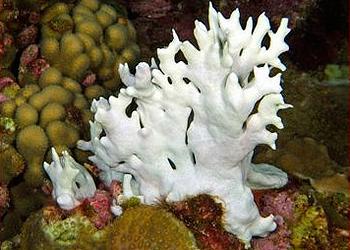
HONOLULU, Hawaii, October 18, 2013 (ENS) – By the year 2100, about 98 percent of the oceans will be affected by acidification, warming temperatures, low oxygen, or lack of biological productivity, and most areas will be hit by a multitude of these stressors, finds a new study of the impacts of climate change on the world’s ocean systems.
These biogeochemical changes triggered by human-generated greenhouse gas emissions will not only affect marine habitats and organisms, but will often also occur in areas that are heavily used by humans, concludes the international team of 28 scientists.

“When you look at the world ocean, there are few places that will be free of changes; most will suffer the simultaneous effects of warming, acidification, and reductions in oxygen and productivity,” said lead author Camilo Mora, an assistant professor at the Department of Geography at the University of Hawaii at Manoa.
“The consequences of these co-occurring changes are massive – everything from species survival, to abundance, to range size, to body size, to species richness, to ecosystem functioning are affected by changes in ocean biogeochemistry,” said Mora.
Mora and Craig Smith with U-H Manoa’s School of Ocean and Earth Science and Technology worked with a 28-person international collaboration of climate modelers, biogeochemists, oceanographers, and social scientists to develop the study, which is published in the scientific journal “PLOS Biology.”
The human ramifications of these changes are likely to be massive and disruptive, the scientists predict. Food chains, fishing, and tourism could all be impacted.
The study shows that some 470 to 870 million of the world’s poorest people rely on the ocean for food, jobs, and revenues, and live in countries where ocean goods and services could be compromised by multiple ocean biogeochemical changes.

The researchers used the most recent and robust models of projected climate change developed for the Fifth Assessment Report of the Intergovernmental Panel on Climate Change to inform their analysis.
They quantified the extent of co-occurrence of changes in temperature, pH, oxygen, and primary productivity based on two scenarios – a business-as-usual scenario wherein atmospheric carbon dioxide, CO2, concentrations could reach 900 ppm by 2100, and an alternative scenario under which concentrations only reach 550 ppm by 2100.
The scientists said this second scenario would only result from a concerted, rapid CO2 mitigation effort, beginning today.
They discovered that most of the world’s ocean surface will be simultaneously impacted by varying intensities of ocean warming, acidification, oxygen depletion, or shortfalls in productivity.
Only a very small fraction of the oceans, mostly in polar regions, will face the opposing effects of increases in oxygen or productivity, and nowhere will there be cooling or pH increase.
“Even the seemingly positive changes at high latitudes are not necessary beneficial. Invasive species have been immigrating to these areas due to changing ocean conditions and will threaten the local species and the humans who depend on them,” said co-author Chih-Lin Wei, a postdoctoral fellow at Ocean Science Centre, Memorial University of Newfoundland, Canada.

Co-author Lisa Levin, a professor at Scripps Institution of Oceanography at the University of California, San Diego, warns, “Because many deep-sea ecosystems are so stable, even small changes in temperature, oxygen, and pH may lower the resilience of deep-sea communities. This is a growing concern as humans extract more resources and create more disturbances in the deep ocean.”
The researchers assembled global distribution maps of 32 marine habitats and biodiversity hotspots to assess their potential vulnerability to the changes.
As a final step, they used available data on human dependency on ocean goods and services and social adaptability to estimate the vulnerability of coastal populations to the projected ocean biogeochemical changes.
“Other studies have looked at small-scale impacts, but this is the first time that we’ve been able to look the entire world ocean and how co-occurring stressors will differentially impact the Earth’s diverse habitats and people,” said co-author Andrew Thurber, a Scripps alumnus and now a postdoctoral fellow at Oregon State University.
“The impacts of climate change will be felt from the ocean surface to the seafloor. It is truly scary to consider how vast these impacts will be,” said co-author Andrew Sweetman, who helped to convene the original team of investigators and now leads the deep-sea ecosystem research group at the International Research Institute of Stavanger, Norway. “This is one legacy that we as humans should not be allowed to ignore.”
Results of the study are published in the current issue of the journal “PLoS Biology.” It was funded by SeaGrant Hawaii, the Norwegian Research Council and the International Network for Scientific Investigation of Deep-sea Ecosystems.
Copyright Environment News Service (ENS) 2013. All rights reserved.
